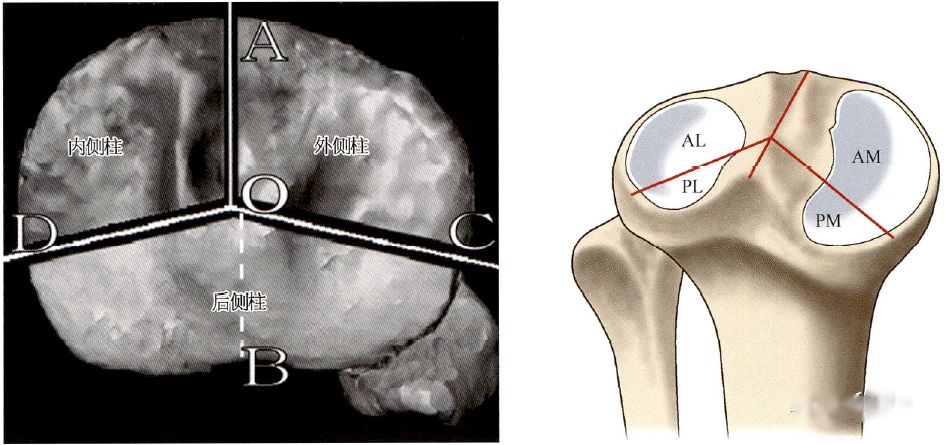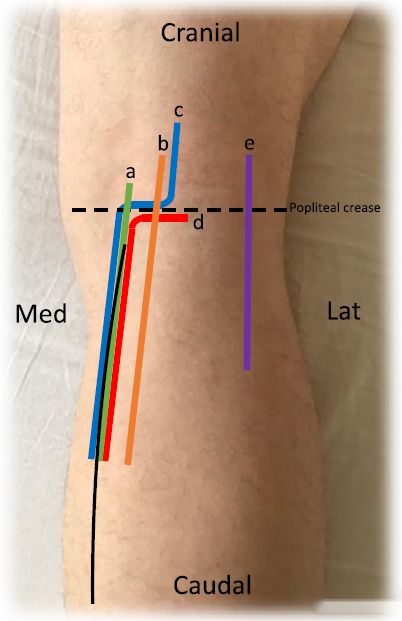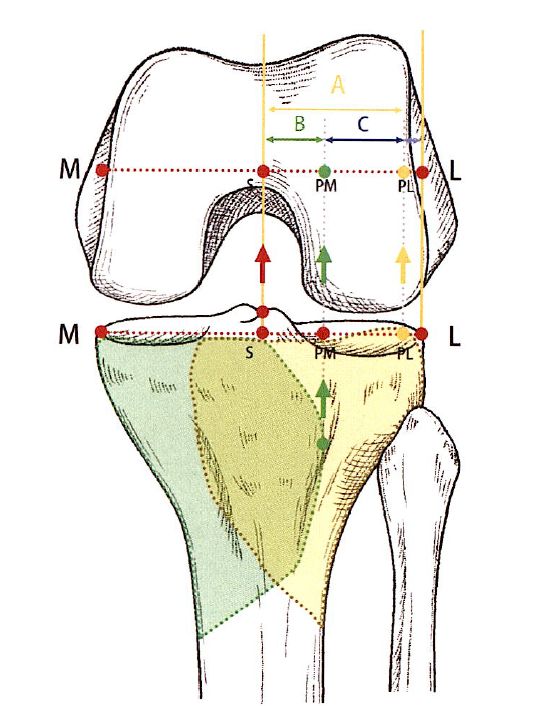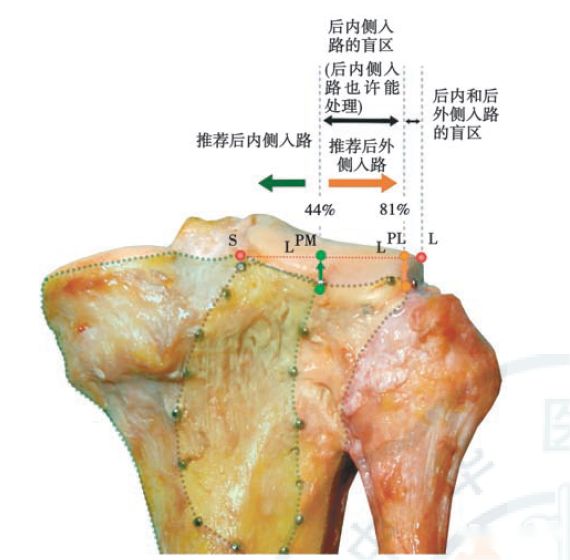„Die Repositionierung und Fixierung von Frakturen der hinteren Säule des Tibiaplateaus stellen klinische Herausforderungen dar. Darüber hinaus gibt es je nach Vier-Säulen-Klassifikation des Tibiaplateaus Variationen in den chirurgischen Zugängen für Frakturen der posteromedialen oder posterolateralen Säule.“
Das Tibiaplateau kann in einen Drei-Säulen- und einen Vier-Säulen-Typ unterteilt werden.
Sie haben bereits eine detaillierte Einführung in die chirurgischen Zugangswege für Frakturen des posterolateralen Tibiaplateaus gegeben, einschließlich des Carlson-Zugangs, des Frosh-Zugangs, des modifizierten Frosh-Zugangs, des Zugangs oberhalb des Fibulaköpfchens und des lateralen Femurkondylen-Osteotomie-Zugangs.
Zur Freilegung der hinteren Säule des Tibiaplateaus gibt es weitere gängige Zugangswege, darunter den S-förmigen posteromedialen Zugang und den umgekehrten L-förmigen Zugang, wie in der folgenden Abbildung dargestellt:
a: Lobenhoffer-Zugang oder direkter posteromedialer Zugang (grüne Linie). b: Direkter posteriorer Zugang (orange Linie). c: S-förmiger posteromedialer Zugang (blaue Linie). d: Umgekehrt L-förmiger posteromedialer Zugang (rote Linie). e: Posterolateraler Zugang (lila Linie).
Die verschiedenen chirurgischen Zugangswege bieten unterschiedliche Möglichkeiten zur Darstellung der hinteren Säule, und in der klinischen Praxis sollte die Wahl der Darstellungsmethode auf der Grundlage der spezifischen Lage der Fraktur erfolgen.
Der grüne Bereich stellt den Expositionsbereich für den umgekehrten L-förmigen Zugang dar, während der gelbe Bereich den Expositionsbereich für den posterolateralen Zugang darstellt.
Der grüne Bereich stellt den posteromedialen Zugang dar, der orange Bereich den posterolateralen Zugang.
Veröffentlichungsdatum: 25. September 2023














